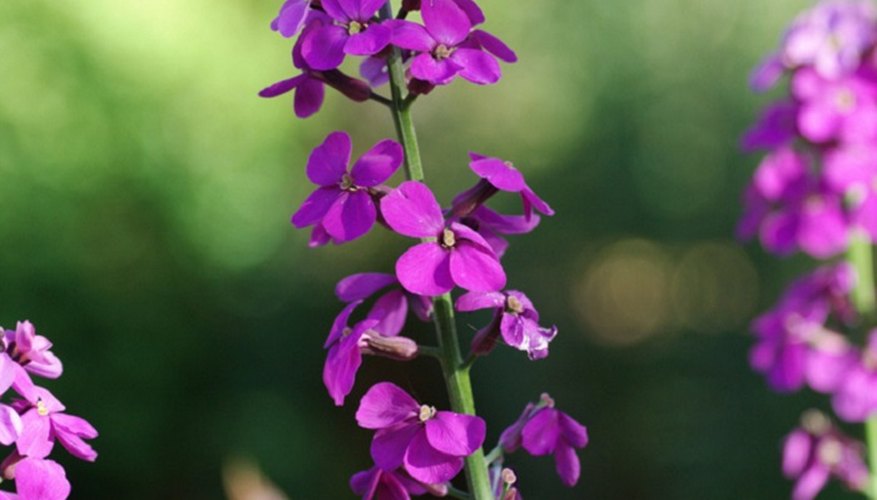Several plants bear the name "wallflower." Most of them are biennial to perennial bushy flowering plants with herbaceous stems. Erysimum is a genus of wallflower that belongs to the Brassica family and the flowers indeed resemble those of a broccoli that has been allowed to flower. The other genus is Cheiranthus and is native to the Canary Islands but is widely found in the UK and the rest of Europe. As perennials, they can be cut back in early spring to produce a fresh display.
Identification
Wallflowers are unremarkable plants for their foliage. They form a bushy plant with long narrow leaves that are dull and moderately green. They are considered perennials but do not last more than a few years before the plant no longer performs well. During its peak, the wallflower blooms continuously throughout the season. The flowers are simple four-petal blooms, but the sheer number of them on the bush and the vibrant colours provide quite a show.
- Wallflowers are unremarkable plants for their foliage.
Cutting back
These prolific plants bloom so hard and full for the entire season that they soon fade away. As a perennial, these only last three to five years in good cultivation. Wallflowers can be cut back after blooming, or you can wait until the end of winter or very early spring. Cut them to nearly the ground, and the plant will reward you with a new flush of growth when temperatures warm up.
- These prolific plants bloom so hard and full for the entire season that they soon fade away.
Rejuvenation of wallflower
While many perennials are good candidates for division, the same can't be said of wallflowers. They are not the sort of plant that you dig up and cut into pieces and then plant the divisions. Some species will reseed themselves, but most will have to be mechanically resown. Wallflower is easy to seed. Sow indoors in flats six to eight weeks before the last frost or sow in spring. The seeds are tiny and can be surface sowed with a dusting of about 0.5 cm of topsoil. Wallflower transplants well and is an ideal addition to any border or perennial garden.
- While many perennials are good candidates for division, the same can't be said of wallflowers.
Uses
Some of the wallflowers are creeping type plants and can be used as ground covers and border plants. As a general rule, they will overwinter well with an additional layer of mulch. Well-drained soils and slightly dry conditions favour the growth of wallflowers. Use them in pots and as accent plants for annual beds. Don't be frustrated if your favourite plant doesn't come up one year. The nature of the plant is to reseed after it has depleted its reserves. You can plant a new one or capture seed at the end of each season to propagate your own plants.
- Some of the wallflowers are creeping type plants and can be used as ground covers and border plants.
